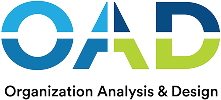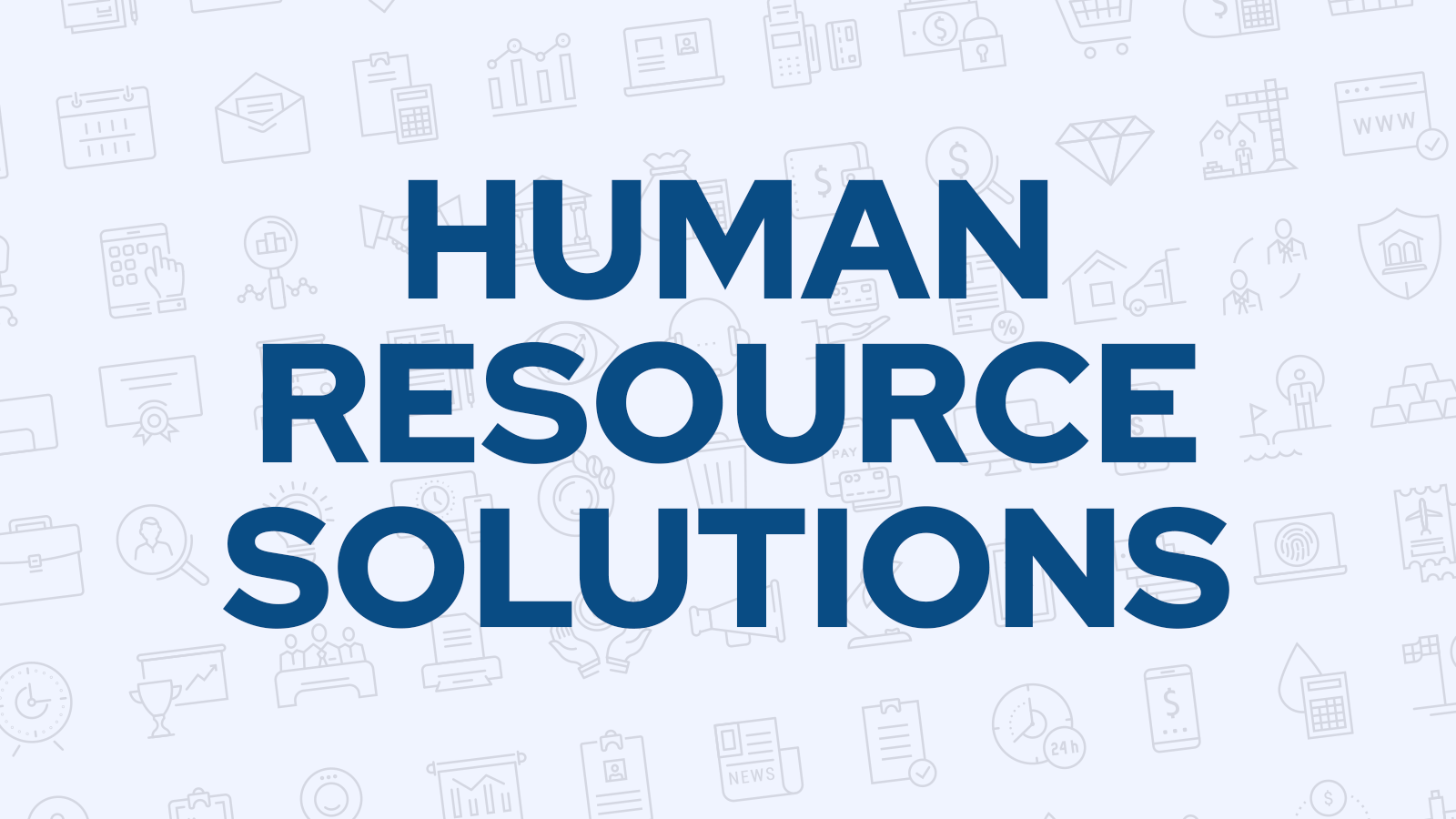Human resource solutions aren’t just about managing payroll or benefits anymore — they’ve become the engine that drives business performance. In today’s competitive landscape, HR leaders face rising complexities in compliance, employee engagement, and talent retention, making data-driven solutions essential. The right approach can transform HR from an administrative function into a strategic powerhouse for smarter hiring and stronger teams.
Table of Content
- Why Human Resource Solutions Matter More Than Ever
- The Core Functions of Human Resource Management
- Modern Challenges HR Leaders Face
- Data-Driven HR: Using Metrics to Drive Better Outcomes
- Human Resource Technology and Automation
- Outsourcing vs. In-House HR Solutions
- The Link Between HR Solutions and Business Performance
- Building a Future-Ready HR Strategy
- Finding the Right HR Solutions for Your Organization
- How OAD Helps Organizations Simplify HR Complexities
- Final Thoughts: Building Teams That Last
Human resource solutions aren’t just about managing payroll or benefits anymore — they’ve become the engine that drives business performance. In today’s competitive landscape, HR leaders face rising complexities in compliance, employee engagement, and talent retention, making data-driven solutions essential. The right approach can transform HR from an administrative function into a strategic powerhouse for smarter hiring and stronger teams.
Leading providers demonstrate the ability to deliver comprehensive human resource services, supporting complex, enterprise-level HR needs with expertise and efficiency.
Consider this: according to Gallup, disengaged employees cost companies an estimated $8.8 trillion globally in lost productivity — a staggering reminder of how much is at stake. When hiring decisions are rushed or misaligned, organizations risk not only turnover but also a weakened culture and stalled growth. On the other hand, companies that approach HR strategically — leveraging the right tools, behavioral insights, and compliance frameworks — see measurable improvements in both performance and retention.
This blog explores the core functions of HR, today’s most pressing challenges, and the data-driven strategies that allow HR leaders to simplify complexity while aligning people with business outcomes.
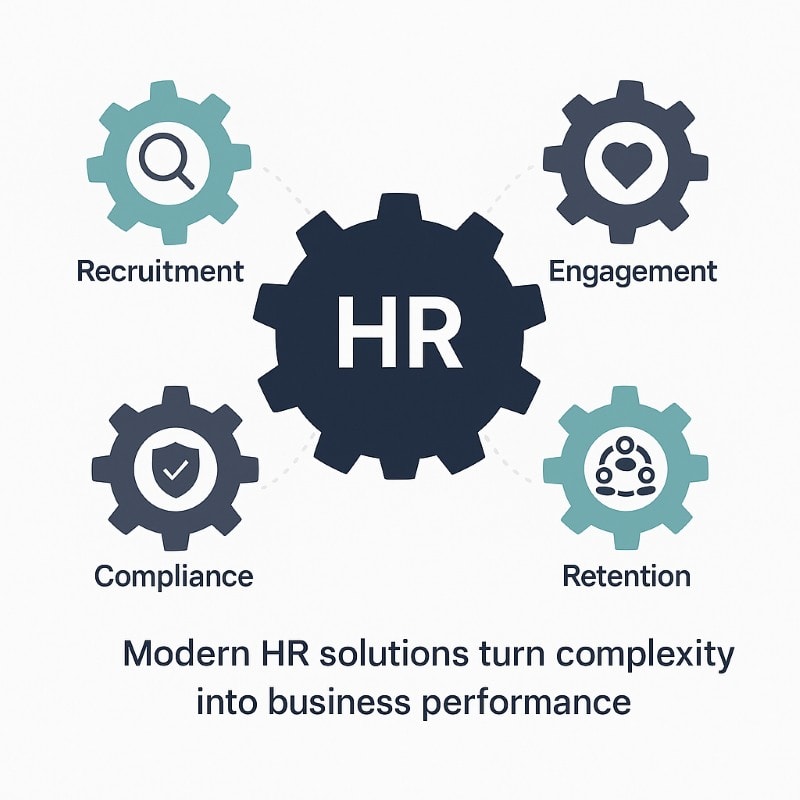
Human resource solutions are no longer just about hiring or payroll — they’ve become the backbone of effective workforce management. Modern HR leaders oversee everything from employee recruitment and engagement to compliance and long-term talent development. When done well, HR solutions don’t just support the business — they accelerate it by aligning people, processes, and strategy.
In today’s fast-paced business environment, staying competitive requires HR to adapt quickly, adopt new practices, and leverage the latest HR technology. These solutions make it possible to streamline operations, reduce administrative burdens, and create a workplace where employees thrive. Some companies turn to outsourcing for efficiency, while others build in-house expertise supported by advanced tools. In both cases, the goal is the same: retain top talent, strengthen employee experience, and allow the organization to focus on its core business objectives.
Effective HR solutions transform workforce management from reactive problem-solving into proactive strategy — driving better outcomes and ensuring long-term business success.
Why Human Resource Solutions Matter More Than Ever
The role of HR has shifted dramatically. What once focused primarily on administration — payroll, compliance paperwork, and benefits — is now recognized as a central driver of business strategy. Today’s HR leaders must manage not just processes but people: recruitment, engagement, retention, and long-term development. Modern human resources now encompass a full suite of services, including compliance management, strategic workforce planning, and employee engagement initiatives, all designed to improve organizational efficiency and workforce productivity.
A 2023 SHRM report noted that 83% of HR executives believe talent management directly influences company growth, and CEOs are paying attention. Jeff Bezos famously insisted on a “bar-raising” hiring process at Amazon, knowing that the quality of each hire compounds over time. The same philosophy applies today across industries: when HR gets hiring and engagement right, companies grow stronger; when they get it wrong, costs soar.
This is why organizations are rethinking human resources solutions — not as back-office support, but as core business strategy. Human resources solutions provide a comprehensive approach to workforce management, supporting both strategic and operational needs. Effective HR solutions help align talent with organizational goals, reduce costly turnover, and ensure compliance with ever-changing employment laws. In short, modern HR isn’t optional. It’s mission-critical.
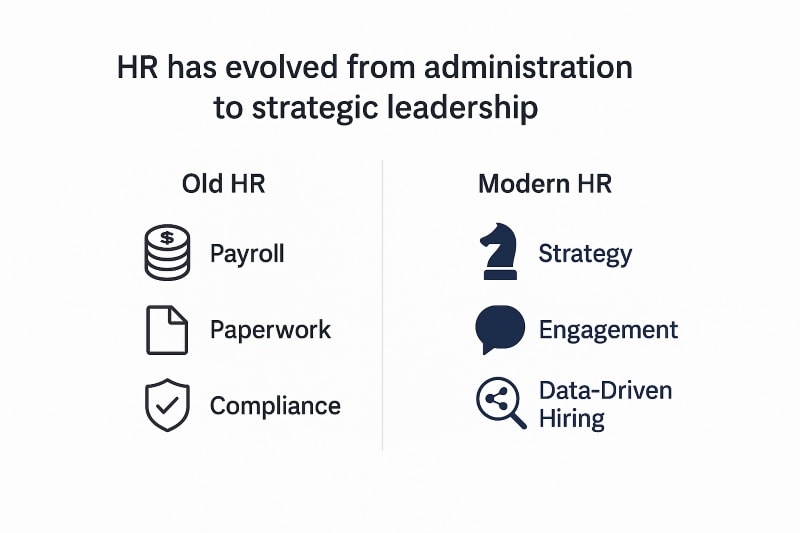
The Core Functions of Human Resource Management
Every business relies on its people — and effective human resource solutions ensure those people are recruited, managed, and supported in ways that drive long-term success. Effective HR solutions also provide ongoing assistance with regulatory compliance, risk management, and workplace safety. A strong HR partner develops clear processes and relationships to support enterprise-level HR functions. While the exact priorities may vary by organization, most HR leaders focus on five essential functions.
Recruitment and Hiring Process
Recruitment isn’t about filling roles quickly — it’s about finding the right people for the right roles. Companies that invest in structured hiring processes and behavioral assessments reduce turnover and increase productivity. OAD’s research shows that aligning candidates to roles based on behavioral fit can lower turnover by up to 40%. Beyond resumes, modern recruitment emphasizes cultural fit, skills alignment, and long-term potential. Structured recruitment processes not only attract top candidates but also help organizations retain talent by ensuring the right fit from the start.
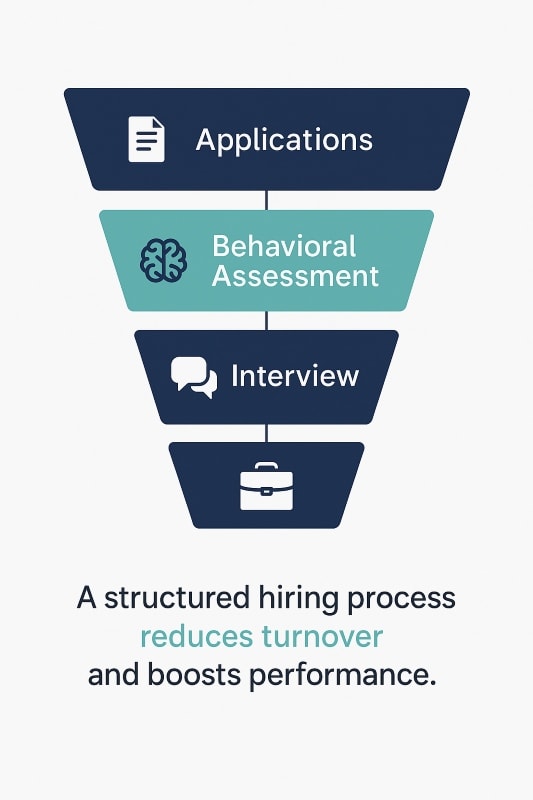
Employee Engagement and Experience
Engaged employees are the backbone of any successful business. HR solutions help organizations develop tailored engagement and training programs that boost employee satisfaction and performance. Gallup reports that companies with highly engaged teams see 21% greater profitability. HR solutions that provide regular feedback, recognition programs, and development opportunities foster a positive employee experience that translates into measurable business outcomes.
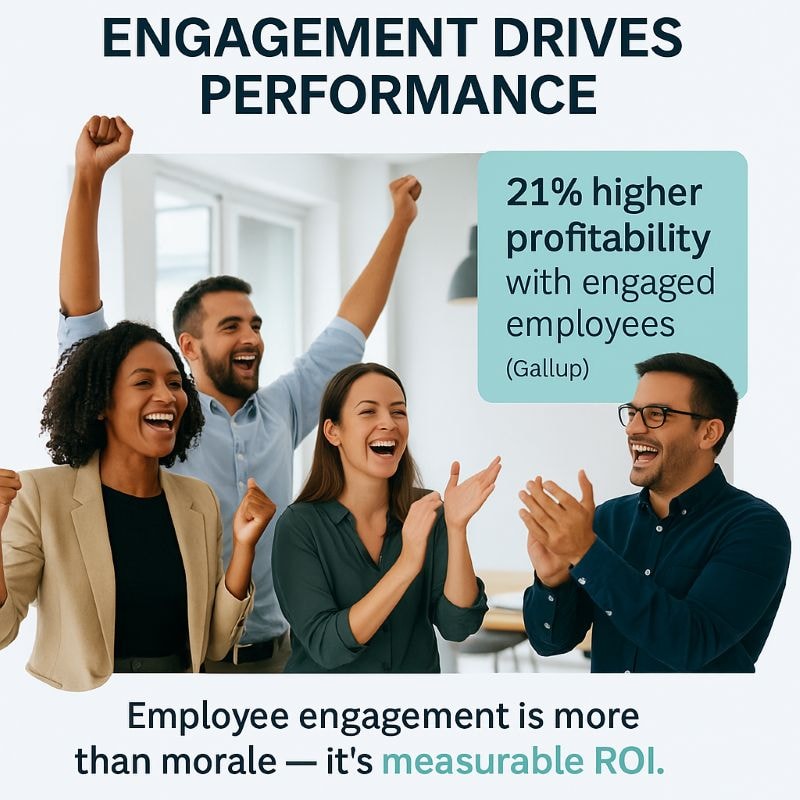
Employee Relations and Conflict Resolution
Strong employee relations prevent small issues from becoming major disruptions. Modern HR leaders train managers to spot early signs of conflict, provide mediation processes, and ensure open communication. When employees feel heard, trust strengthens across the organization.
Benefits Administration and Payroll
Benefits and payroll are foundational, but they’re also complex. From healthcare to retirement plans, benefits administration requires accuracy, transparency, and compliance with regulations. HR technology now automates much of this work, reducing errors and freeing leaders to focus on strategy rather than paperwork. Modern HR platforms also enable employees to securely update personal information and manage their benefits online.
Compliance with Employment Laws
Noncompliance can be costly — both financially and reputationally. In 2023 alone, U.S. employers paid over $513 million in back wages due to compliance violations (U.S. Department of Labor). Human resource solutions that integrate compliance tracking, risk assessments, and training help organizations stay ahead of evolving regulations.
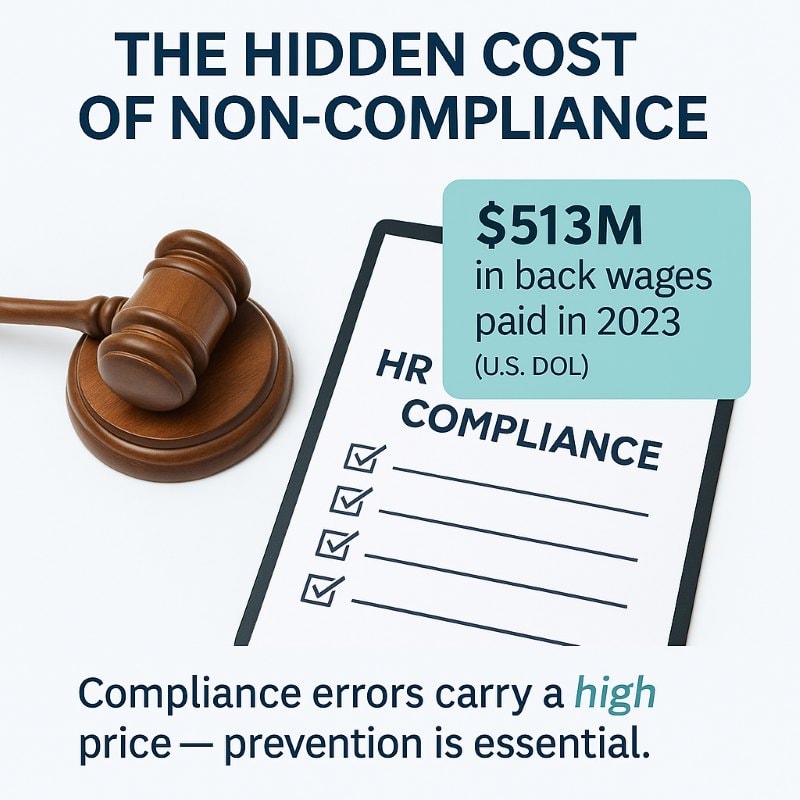
Policy Development and Implementation
Clear, well-crafted policies are the foundation of effective human resource solutions. They provide managers and employees with consistent guidance on acceptable practices, reinforce organizational values, and ensure compliance with employment laws and regulations. Rather than being static documents, policies should evolve alongside changing business needs and regulatory landscapes.
Strong HR solutions support this process by helping organizations create, update, and administer policies in critical areas such as employee conduct, benefits administration, and workplace practices. When implemented effectively, policies reduce risk, foster positive employee relations, and build trust across the workforce.
Done right, policy development doesn’t just protect the organization from liabilities — it strengthens culture. Transparent, fair, and consistently applied policies create an environment where employees understand expectations, feel supported, and contribute more effectively to business goals.
Human Capital Development: Training, Growth, and Retention
Human capital development is one of the most strategic areas of HR. By investing in training and development programs, organizations give employees the tools to expand their skills, deepen their knowledge, and grow into future leaders. Continuous learning doesn’t just improve productivity — it builds engagement, loyalty, and long-term retention.
HR solutions play a critical role in making this possible. From structured onboarding and leadership training to career development pathways, effective solutions ensure employees have access to the resources they need to thrive. The result is a stronger employee experience, reduced turnover, and a workforce that can adapt to evolving business challenges.
By prioritizing human capital development, HR leaders do more than fill skills gaps — they foster a culture of growth. Employees who feel supported in their development are more engaged, more innovative, and more likely to stay. In the long run, this commitment to people is what drives organizational resilience and competitive advantage.
Modern Challenges HR Leaders Face
Even the most experienced HR leaders are navigating uncharted territory. The challenges of today extend far beyond traditional HR functions — and the stakes have never been higher.
One of the biggest pain points is employee turnover. According to Gallup, the cost of replacing a disengaged employee can reach 150% of their annual salary. Beyond the financial hit, constant turnover erodes culture and slows innovation. This is why retention — not just recruitment — is a top priority.
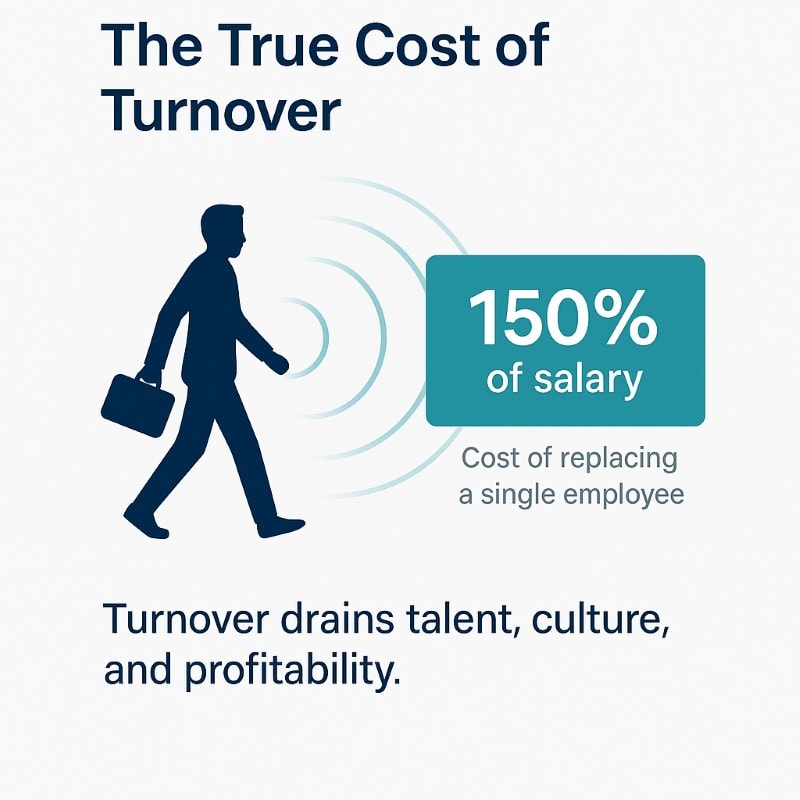
Another challenge is compliance complexity. From data privacy (GDPR) to rapidly changing employment laws, HR teams must constantly update practices to stay compliant. A single error can mean costly penalties and reputational damage.
Technology is both a solution and a challenge. While HR tech can automate payroll and streamline benefits administration, it also introduces risks like data security and the need for ongoing training. Elon Musk often says, “Technology is only as good as the people who use it.” For HR, this means that tech adoption must be paired with behavioral insight and proper implementation.
Finally, there’s the human side: engagement in a hybrid world. Howard Schultz of Starbucks has long argued that culture is a company’s strongest differentiator. Yet many organizations struggle to build connection when teams are dispersed across offices, homes, and time zones. Without intentional strategies, engagement drops — and so does productivity.
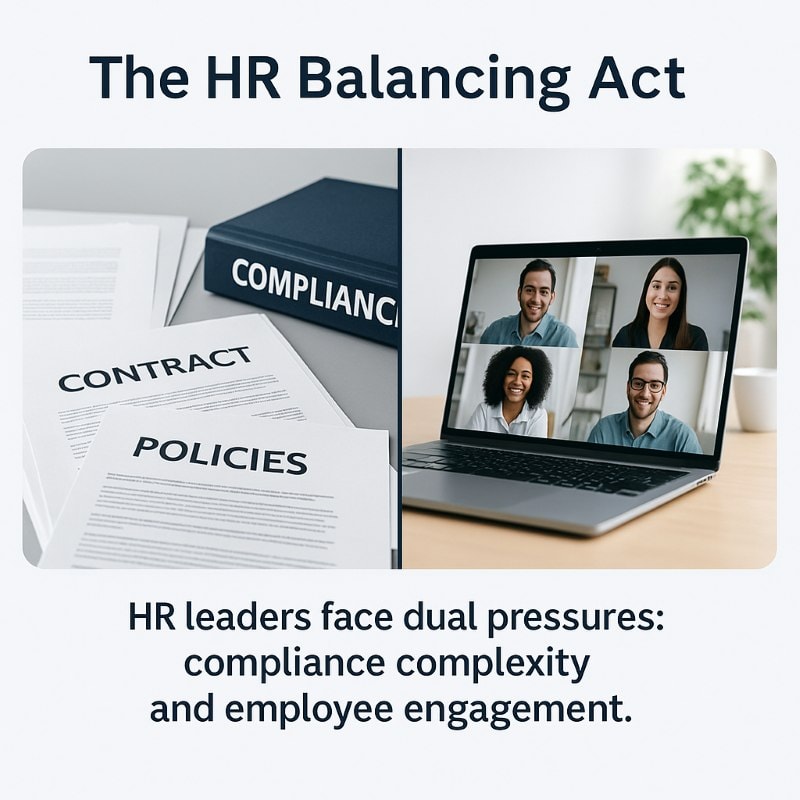
Data-Driven HR: Using Metrics to Drive Better Outcomes
The best HR leaders don’t rely on instinct — they rely on data. Key metrics like time-to-hire, cost-per-hire, and employee engagement scores give organizations clarity on what’s working and where adjustments are needed.
Take retention, for example: LinkedIn’s Global Talent Trends report found that companies leveraging people analytics improved retention rates by up to 50%. By tracking turnover drivers and aligning employees with the right roles, HR can transform a chronic liability into a measurable strength.
Warren Buffett famously said, “What gets measured gets managed.” In HR, the reverse is also true: what goes unmeasured becomes a hidden cost. Human resource solutions that integrate behavioral data, compliance tracking, and performance metrics empower leaders to not only spot problems early but also predict outcomes — turning HR into a competitive advantage.
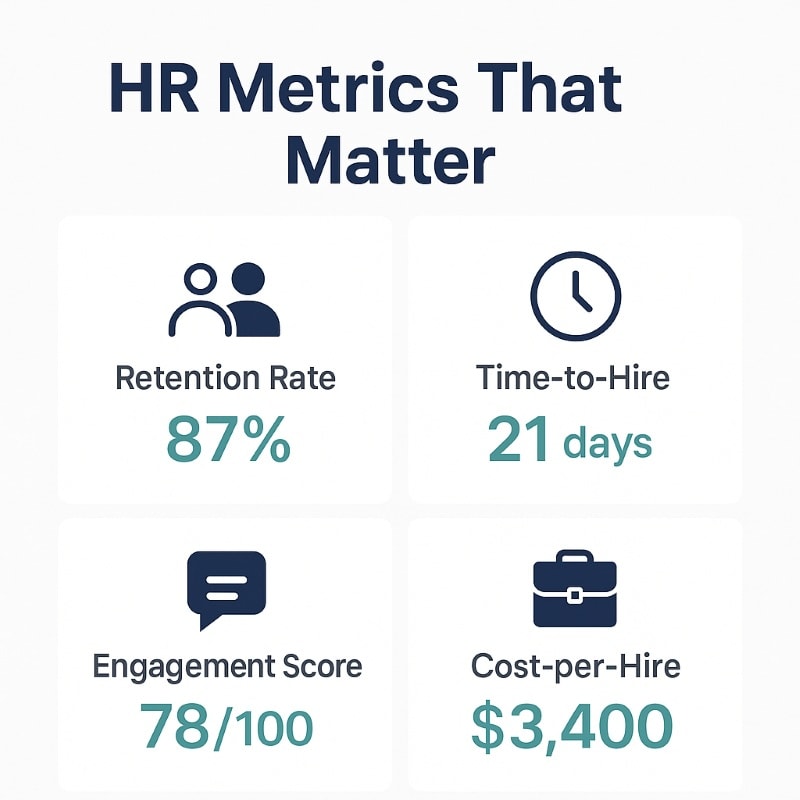
Human Resource Technology and Automation
Technology has redefined HR. What once required hours of manual administration — payroll, benefits, compliance tracking — can now be handled in minutes through HRIS platforms and automation tools. The payoff? Lower costs, fewer errors, and more time for HR leaders to focus on strategy.
But technology is not a silver bullet. Research from Deloitte shows that only 26% of companies feel they’re using HR tech effectively. Tools are powerful, but only when paired with the right processes and insights. That’s where behavioral data and strong leadership come in: technology amplifies strategy, it doesn’t replace it.
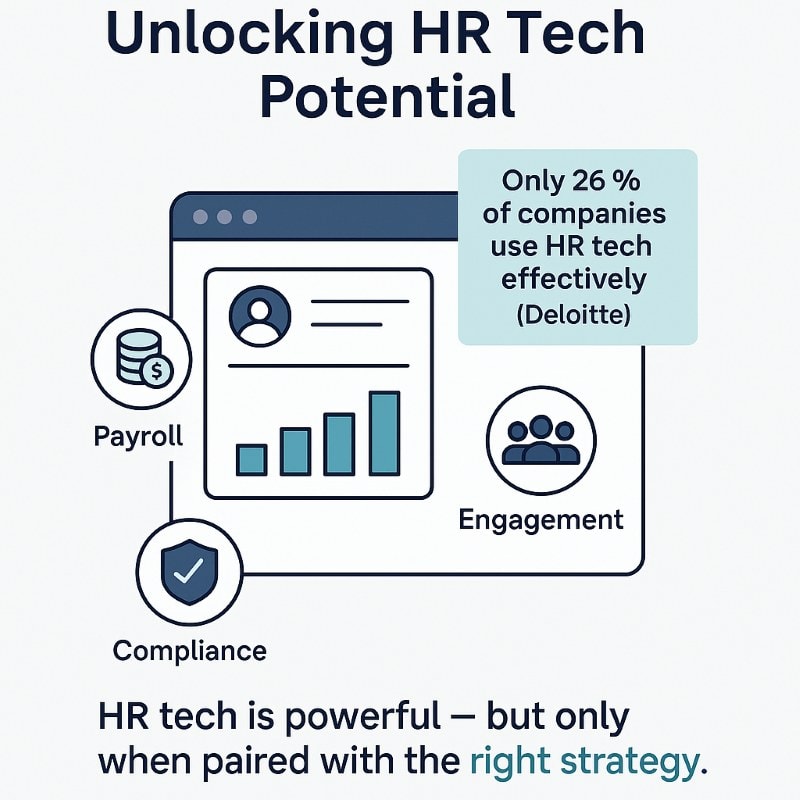
Elon Musk often reminds teams that “automation applied to an inefficient process magnifies the inefficiency.” For HR, the lesson is clear — success depends not on the tools alone, but on how intelligently they’re implemented.
Outsourcing vs. In-House HR Solutions
For many organizations, the question isn’t whether HR is essential — it’s whether to manage it in-house or outsource. Outsourcing can reduce costs, provide access to specialized expertise, and ease the administrative burden. However, it often sacrifices control and the deep cultural understanding that internal HR teams bring.
Larger companies usually benefit from keeping HR functions in-house, where strategy and culture alignment are critical. Outsourcing may still play a role in areas like payroll or benefits administration, but strategic functions — recruitment, engagement, and leadership development — thrive when owned internally.
The most effective approach often blends the two: outsourcing transactional tasks, while empowering in-house HR to focus on building stronger teams and aligning people with business goals.
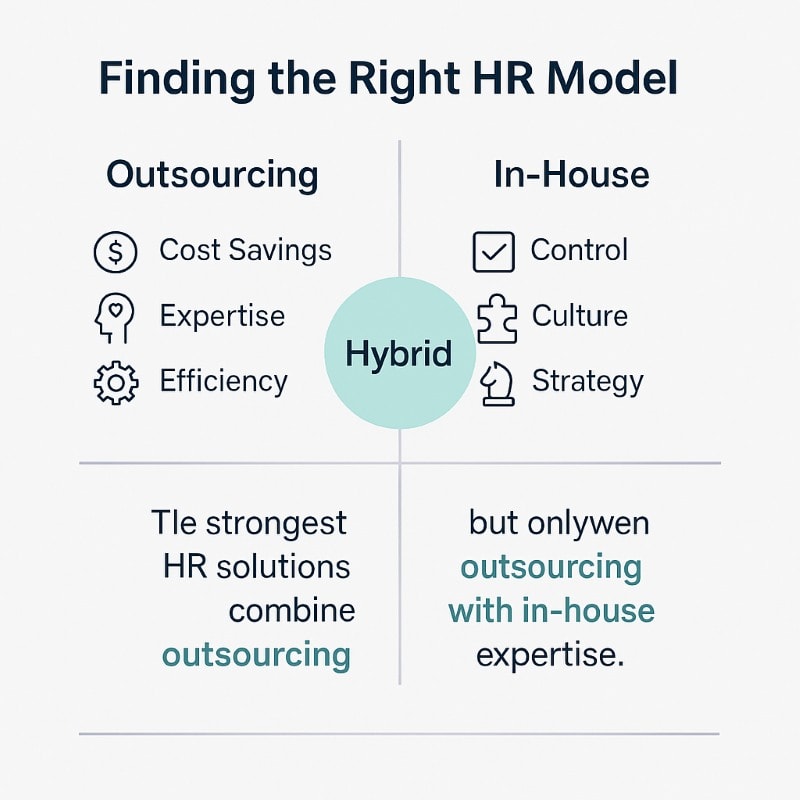
The Link Between HR Solutions and Business Performance
Strong HR isn’t just about compliance or processes — it’s about performance. When employees are aligned with roles that fit their strengths, productivity rises and turnover drops. Gallup has found that organizations with highly engaged employees outperform competitors by 23% in profitability.
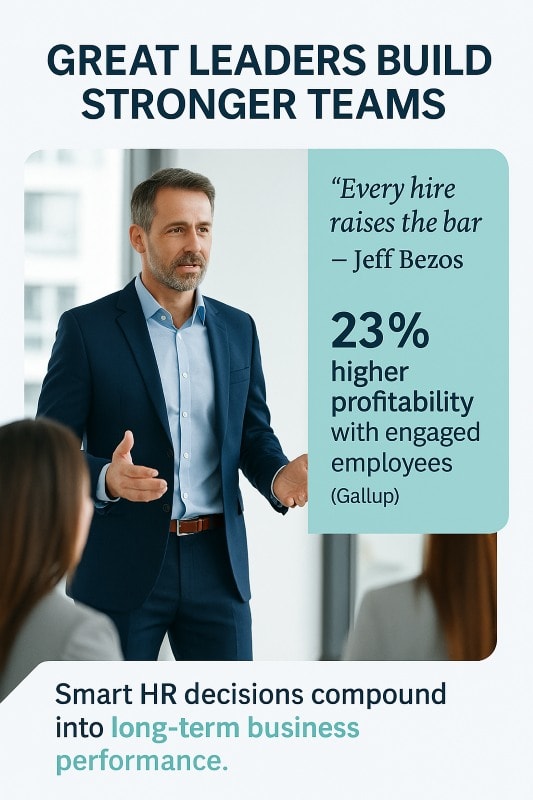
Jeff Bezos built Amazon on the principle that every hire raises the bar. His philosophy echoes a broader truth: talent decisions compound over time, shaping whether a company accelerates growth or stalls. Human resource solutions that prioritize data, behavioral insights, and alignment ensure each new hire strengthens the organization.
HR isn’t a cost center — it’s a profit driver. By linking hiring, engagement, and retention strategies to measurable business outcomes, HR leaders can turn people management into one of the company’s greatest competitive advantages.
Industry Recognition and Certification in HR
Recognition and certification in human resource management signal more than compliance — they demonstrate a company’s commitment to excellence and best practices. Programs like SHRM-CP or SHRM-SCP provide HR professionals with the knowledge and credibility to implement stronger solutions and stay current with evolving trends.
For organizations, investing in certification isn’t just about credentials — it’s about outcomes. Certified HR teams are better equipped to navigate regulations, design effective policies, and drive continuous improvement. This recognition enhances organizational reputation, builds employee confidence in HR leadership, and positions the company as an employer of choice.
In a competitive market, these signals of credibility can make the difference between attracting top talent and losing them to competitors. By pursuing industry recognition and supporting HR teams in certification, organizations reinforce their commitment to high standards — and gain a measurable edge in workforce performance.
Building a Future-Ready HR Strategy
HR leaders can’t afford to focus only on today — they need strategies that anticipate tomorrow’s workforce. That means investing in training and development programs that build critical skills, while also preparing succession plans that ensure leadership continuity. Companies that plan ahead are less vulnerable to sudden turnover and better equipped to scale.
A future-ready HR strategy also prioritizes diversity, equity, and inclusion (DEI). Research from McKinsey shows that companies in the top quartile for diversity are 36% more likely to outperform financially. Beyond numbers, inclusive workplaces attract stronger talent and foster innovation.
The thread that ties it all together is alignment: aligning people with roles, roles with strategy, and strategy with business goals. HR solutions that create this alignment don’t just solve problems — they future-proof organizations against disruption.
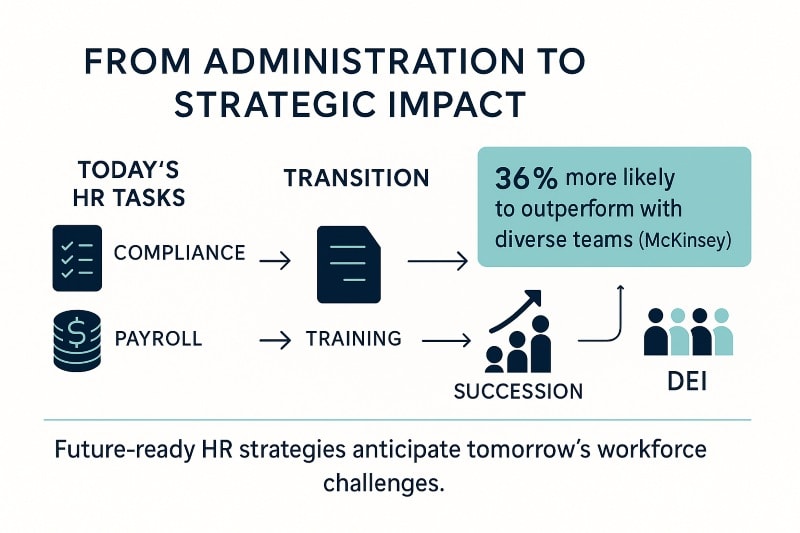
Finding the Right HR Solutions for Your Organization
Choosing the right HR solutions is a strategic decision that shapes everything from employee engagement to overall business performance. The best starting point is assessing your organization’s unique needs: do you need stronger employee management practices, more efficient payroll and benefits administration, or a better hiring process? Clear priorities make it easier to select solutions that align with long-term goals rather than short-term fixes.
Metrics matter here. Tracking engagement levels, turnover rates, and benefits utilization can highlight where improvements will have the greatest impact. The right HR solutions don’t just solve today’s problems — they scale with your business, improve employee satisfaction, and strengthen competitiveness.
That’s why leading organizations turn to data-driven tools like OAD’s behavioral assessments. By adding science-backed insight into the selection process, companies can move beyond guesswork and ensure that every HR solution truly supports people, processes, and strategy.
How OAD Helps Organizations Simplify HR Complexities
Even the most advanced HR solutions can fall short without the right data. That’s where OAD comes in. Backed by decades of behavioral science, OAD’s assessments go beyond résumés and gut instinct to reveal how candidates and employees actually think, work, and thrive.
By aligning people to roles based on behavioral fit, OAD helps companies reduce turnover, strengthen engagement, and build teams that perform at a higher level. For HR leaders, this means fewer costly mis-hires, less guesswork, and more confidence in every talent decision.
In a business world defined by complexity, OAD makes human resource solutions smarter, simpler, and science-backed.
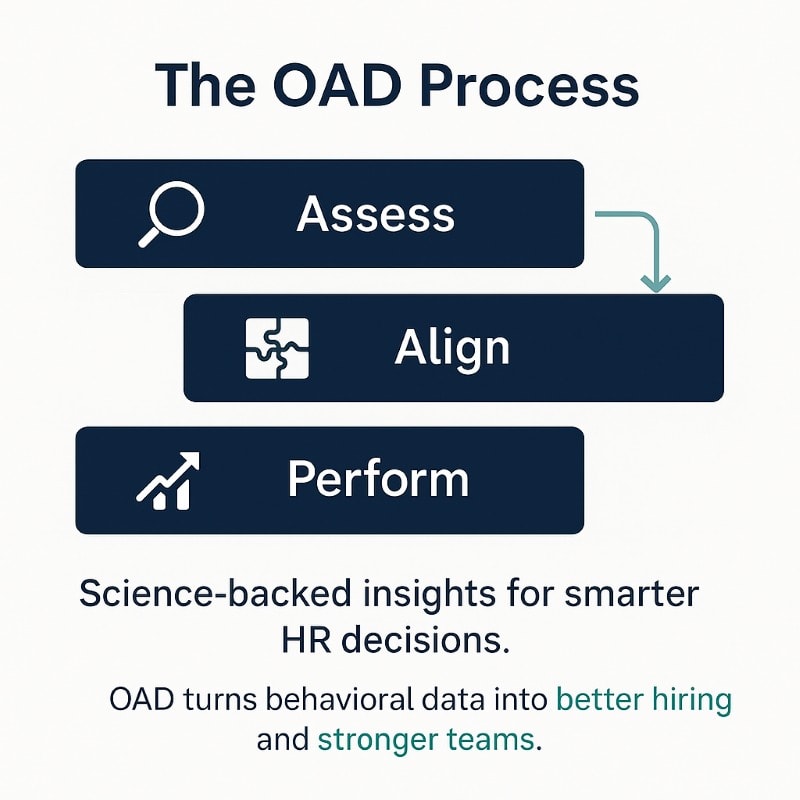
Final Thoughts: Building Teams That Last
The challenges facing HR leaders today are complex — from compliance and technology to engagement and retention. But with the right solutions, HR stops being a cost center and becomes a growth driver. Companies that invest in data-driven, science-backed approaches don’t just solve problems — they build organizations that attract talent, retain it, and outperform competitors.
The future of HR is strategic, measurable, and people-focused. With OAD, you can simplify complexity and align every hire with your business goals.
